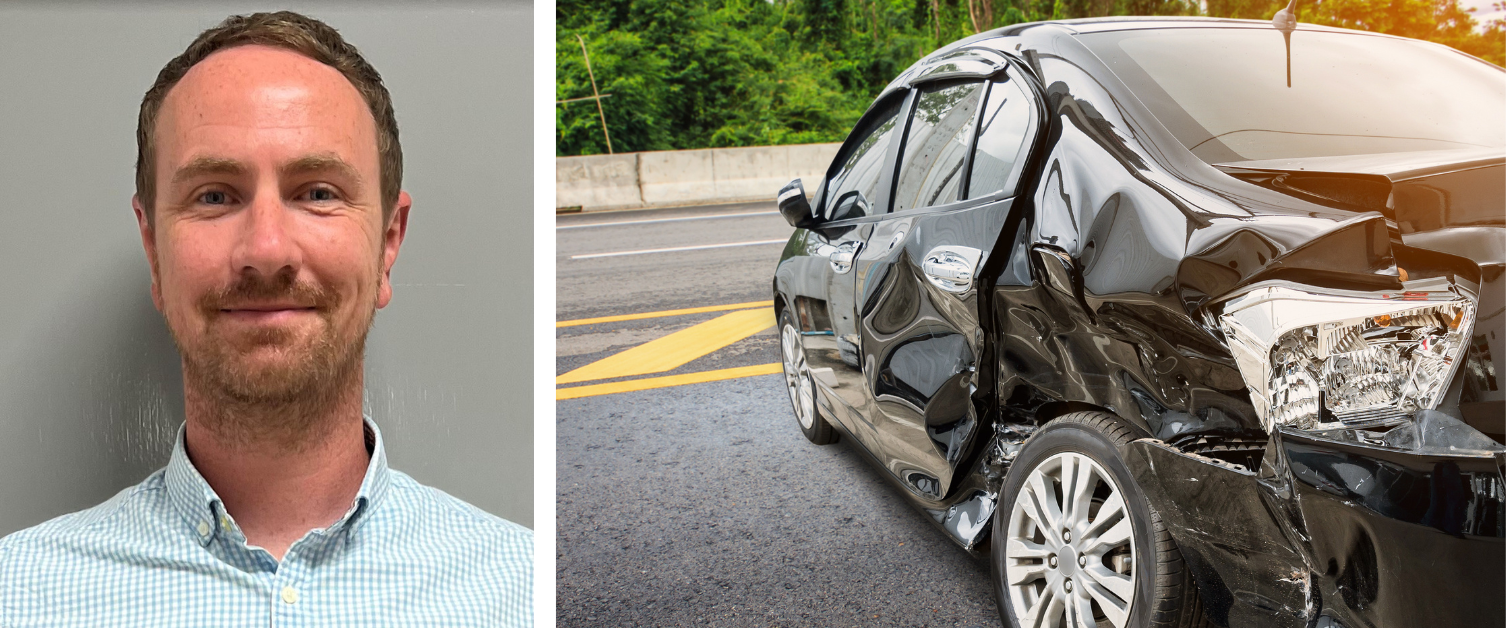New study supported by Wrexham consultant finds injuries caused in car accidents differ according to age and gender

30/06/2022
Largest analysis of trapped patients injured in motor vehicle collisions reveals important differences in relation to age and gender, as well as higher mortality rates.
A series of studies conducted by consultants at University Hospitals Plymouth (UHP) NHS Trust, in collaboration with colleagues from other organisations including Consultant Nurse Rob Fenwick from Wrexham Maelor Hospital, have revealed that not only are patients who become trapped when involved in a car accident more likely to die, but that there are also significant differences in injuries sustained according to age and sex.
Motor vehicle collisions (MVCs) are the second most common cause of major trauma in the UK. Worldwide, they are a significant cause of morbidity and mortality, accounting for 1.35 million deaths per annum.
Mr Fenwick said: “Despite improvements in car safety deaths and disability following Motor Vehicle Collisions (MVC) are still really common unfortunately. As a study team who have all worked in the pre-hospital and emergency department setting, we recognised that there is the huge potential to improve patient care for this group.
“Over the past five years we have found that there are considerable differences in how we presumed, or have historically believed, patients are injured after MVC. For example, the strategies used to remove patients from vehicles have been focussed on moving them as little as possible to avoid worsening spinal injuries, however this has a huge impact on the amount of time it takes for patients to be extricated and therefore on the time it takes them to receive treatment and transport to definitive care.”
Professor Tim Nutbeam, Emergency Medicine Consultant from UHP and lead author of a series of papers, in collaboration with Mr Fenwick and colleagues across a number of organisations, received funding for the research from the Road Safety Trust.
According to the results of the first paper, patients who are trapped after a MVC have a higher severity of injuries and are more likely to die than those who are not trapped. Of the 63,625 cases studied, nearly 11% of patients were trapped in their vehicles after an accident.
The second paper published demonstrates that older patients are more likely to become trapped in their cars, and in particular, those aged over 80 are more likely to die if trapped. Although chest and spinal injuries are more common in older patients (with head, abdominal and limb injuries more common in younger patients), the overall rate of spinal injuries for all age groups remains low, providing evidence that minimising entrapment time could help to reduce mortality and improve patient outcomes.
In the final paper of this initial series, the results show that although men are more likely to be involved in serious crashes and admitted to hospital, women were more frequently trapped in their cars (16% of women vs 9% of men). Potential reasons for this include that women are more likely to sit closer to the steering wheel, increasing the likelihood of becoming trapped. Female patients are also biologically prone to certain types of injury – for instance, women have different pelvic anatomy which may make them more susceptible to pelvic injuries, which may trap them in their vehicles.
The paper also makes the case that the safety features incorporated in modern cars are less likely to be effective for women. Current mandatory crash testing uses a scaled down male mannequin to represent females and are not modelled to account for anthropometric differences between men and women. Safety systems are therefore likely to be more effective for men than for women.
Mr Fenwick added: “Altogether, we really hope the changes in operational guidance will start to positively impact patients in the very near future; and that the stark differences in injuries (and outcomes) for gender and age will lead to better awareness for car manufacturers and empower vehicle safety engineers to find solutions.”
Further research will be published looking into the extrication techniques for people trapped after MVCs. This work has also been funded by the Road Safety Trust, who are dedicated to achieving zero deaths and serious injuries on UK roads.
Organisations include GENDRO, Geneva Graduate Institute, Somerset NHS Foundation Trust, University of Cape Town and University of Manchester.
Further reading:
Nutbeam, T. et al. A comparison of the demographics, injury patterns and outcome data for patients injured in motor vehicle collisions who are trapped compared to those patients who are not trapped. Scand J Trauma Resusc Emerg Medicine 29, 17 (2021). https://sjtrem.biomedcentral.com/articles/10.1186/s13049-020-00818-6
Nutbeam, T. et al. Do entrapment, injuries, outcomes and potential for self-extrication vary with age? A pre-specified analysis of the UK trauma registry (TARN). Scand J Trauma Resusc Emerg Medicine 30, 14 (2022). https://sjtrem.biomedcentral.com/articles/10.1186/s13049-021-00989-w
Nutbeam T, Weekes L, Heidari S, et al. Sex-disaggregated analysis of the injury patterns, outcome data and trapped status of major trauma patients injured in motor vehicle collisions: a prespecified analysis of the UK trauma registry (TARN). BMJ Open 2022. https://bmjopen.bmj.com/content/12/5/e061076